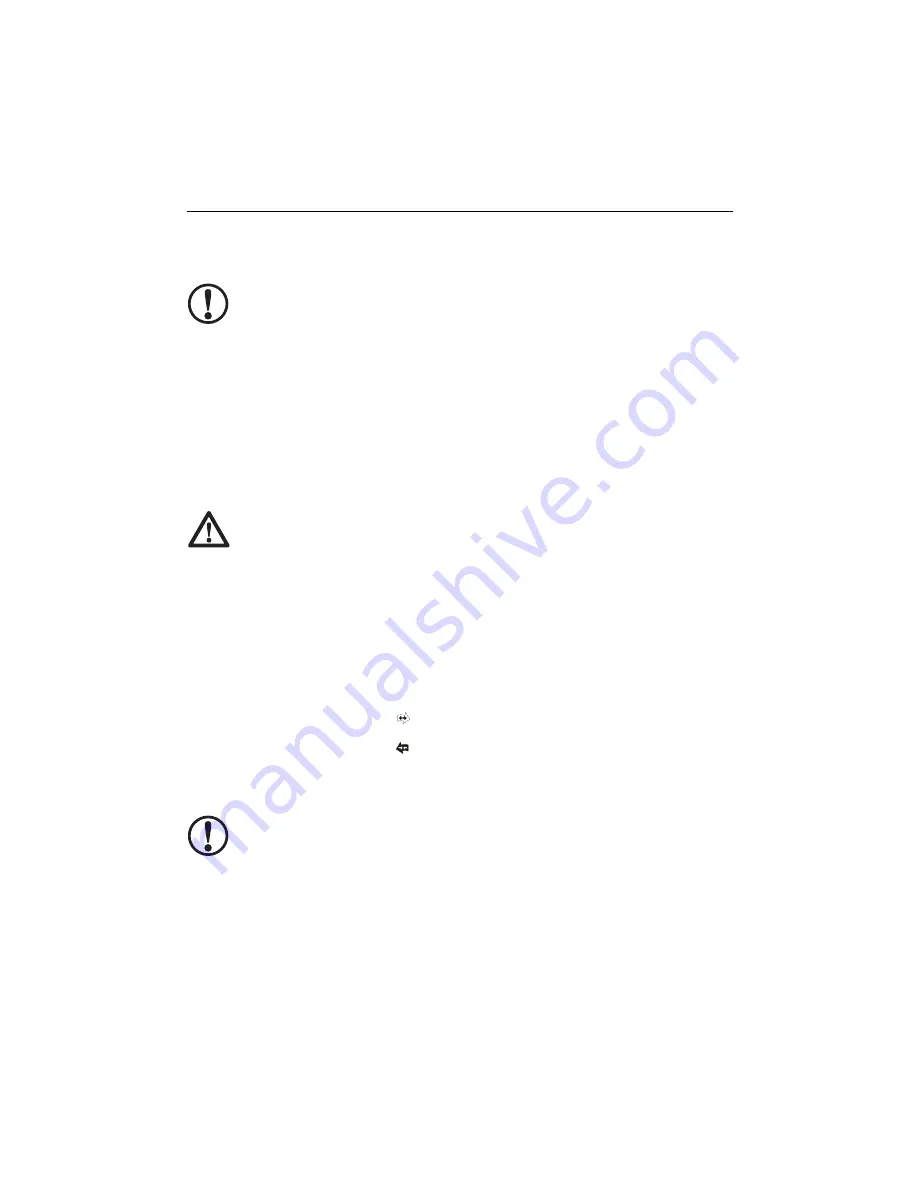
EN
CU4007
916.000.967_005
29
5.3
Disconnect the hydraulic hoses
5.3.1
General
5.3.2
Disconnect the CORE™ couplers
Refer to Fig. 6.
•
Disconnect the dust caps from each other.
•
Disconnect the couplers by turning the external ring on the female coupler and then sliding it in the
direction of the arrows. The male coupler will slip out.
•
Remove dirt and oil from the couplers and dust caps.
•
Replace the dust caps on the female and male couplers.
5.3.3
Disconnect the dual hose couplers
Refer to Fig. 7.
•
Disconnect the dust caps from each other.
•
Disconnect the couplers by turning the ring on the female coupler and sliding it back. The male
coupler will slip out.
•
Remove dirt and oil from the couplers and dust caps.
•
Replace the dust caps on the female and male couplers.
5.4
Operate the deadman’s button
The deadman’s button is used to determine the movement of the plunger(s). In the neutral position no
pressure is built up and the oil flows without pressure back to the pump. If the deadman’s button is
released, it returns automatically to the neutral position and stops the movement of the plunger(s).
Press the front of the deadman’s button
to close the blades. Pressure is built up in the tool. Return oil
from the tool flows without pressure back to the pump.
Press the rear of the deadman’s button
to open the blades. Pressure is built up in the tool. Return oil
from the tool flows without pressure back to the pump.
The tool has a return line safety valve. If the return line to the pump is blocked, this return line safety
valve will prevent excessive pressure in the tool by allowing oil to leak out.
Caution
Never use pliers or similar tools to disconnect the hydraulic couplers.
WARNING
Always make sure that the pressure relief valve is in the "neutral" position, before you
disconnect hydraulic hose(s) from the pump.
Caution
Never change the setting of the return line safety valve.
















































